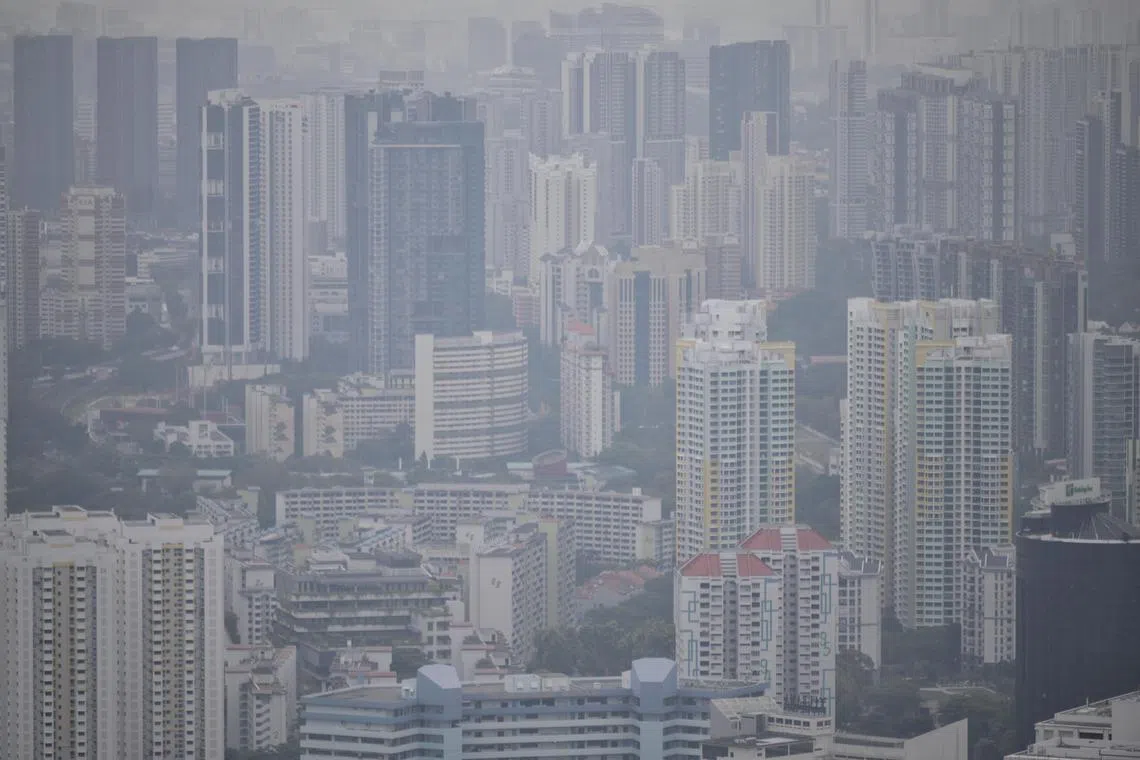High risk of severe transboundary haze in 2023 due to hotter, drier weather: Local think-tank
Sign up now: Get ST's newsletters delivered to your inbox

The risk of haze is high in 2023 especially as the warmer El Nino is expected to return.
PHOTO: ST FILE
Follow topic:
SINGAPORE – There is a high risk in 2023 of severe transboundary haze in Indonesia, Malaysia, Singapore and the surrounding region with hotter and drier weather predicted, especially as the warmer El Nino is expected to return, said local think-tank Singapore Institute of International Affairs (SIIA) in its latest Haze Outlook report.
This is the first time the annual report, which has been published since 2019, has issued a red or high risk rating, and this is mainly due to a severe dry spell forecast for the second half of 2023. The scale goes from green (low risk) to amber (medium risk) and red.
“Every prediction indicates the weather in 2023 will be hotter and drier, with the return of El Nino,” said the report, citing the forecast of the United States National Oceanic and Atmospheric Administration that there is an 84 per cent chance of El Nino going beyond the moderate range into a strong event.
The report noted correlations between the haze episodes in 2015 and 2019 and spikes in drier weather phenomena from El Nino and the Indian Ocean Dipole.
The risk would be lowered to amber if the weather does not turn out to be as dry as predicted, the report said.
SIIA chairman Simon Tay, who directed the report, said severe haze would be akin to what Singapore experienced in 2015 and 2019, when the haze was dense or lasted for days.
Explaining how the weather makes a difference, Associate Professor Tay noted that there were small fires in hot spots in the past few years, but the wetter weather meant “they don’t spread, they don’t run out of control, and they are contained”.
Market conditions for key agricultural commodities could also spur more planting activity, as agricultural commodities have hit record levels in the past year, along with sales of oil palm seeds at the highest in nearly a decade. This increases the likelihood of slash-and-burn practices being carried out in a bid to clear land.
The report added: “While the use of fires (to clear land) is illegal in Indonesia, there can be lapses as there have been in the past, especially among (smaller) plantation operators that are able to sell their products into grey markets, without any certification of sustainability.”
The report also factored in government policies on preventing fires and haze, highlighting the commitments of officials from Indonesia and Malaysia to improve their systems to manage land and resources, and to prevent fires and deforestation.
Prof Tay also noted a more positive tone of cooperation among southern Asean nations, including Brunei, Indonesia, Malaysia, Singapore and Thailand, whose ministers and senior officials gathered in Singapore for a meeting on transboundary haze pollution on June 8.
He said: “In the past, when there has been that kind of emergency situation, we saw very discordant signals.
“When the first fires start (this time round), we hope this dialogue, information sharing and cooperation will continue.”

